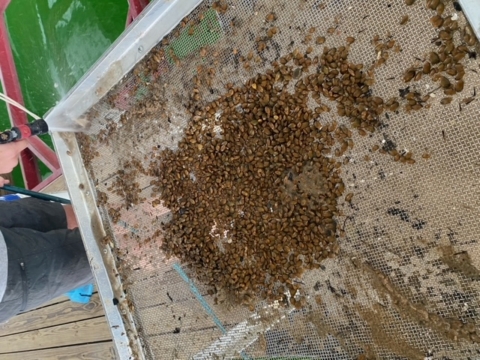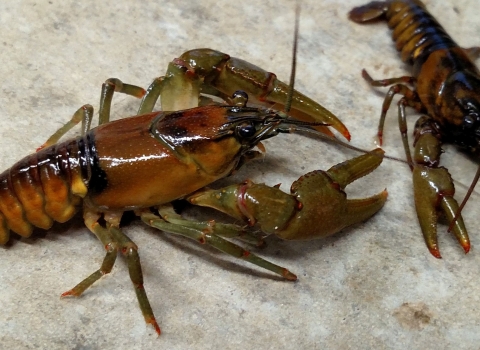September 20th was mussel harvest time at the Norfork National Fish Hatchery. Harvest day is one that is full of excitement and anticipation for what lies in the sandy bottom of our mussel cages. It is a project we are proud to be a part of and one that we hope to continue to improve upon. Across the country, mussel species are in need of some attention, yet not many people know much about them to speak of. Hopefully this article will leave you with a bit more knowledge and give you an idea of how we are actively working towards improving mussel populations.
Before we get into details about this year’s mussel harvest, let’s talk a bit about mussels themselves. Mussel species all over the country are decreasing at an alarming rate. In Arkansas, where the Norfork National fish hatchery reside, there are many species that have statuses such as species of greatest concern, threatened, or even endangered. That is why the mussel work the hatchery and many other U.S. Fish and Wildlife service offices do is so important. Our mussel propagation work is more or less made possible by the mussel’s unique life cycle and reproductive habits. Mussels go through a larval life stage known as glochidia. Glochidia are parasitic to fish, mainly in the gills where they are encapsulated in the fish’s tissue. Once they morph into juvenile mussels, they burst out of the capsule and fall into sediment on the river bottom. We can emulate this process by infesting fish with glochidia, placing them in cages with sediment bottoms, and waiting for the juvenile mussels to fall off. Then we pull our cages up and sift through the sediment to find our prize. Sounds exciting doesn’t it?
Now that some of the ins and outs have been explained, it’s time for the fun part. On September 20, 2023 Kendal Moles of the Arkansas Game and Fish Commission came to assist with our mussel harvest and take certain mussels with him for stocking. This year we had fish infested with glochidia from bleeding tooth, broken ray, fatmucket, and plain pocketbook mussel species. We also retrieved snuffbox (endangered) holdovers from last year so Kendal could release them. Those holdovers totaled to 270 snuffbox mussels released back into the Spring River! We also harvested an estimated 1800 bleeding tooth, over 4000 fatmucket, and 1280 plain pocketbook juveniles. The juveniles will remain in cages until the opportunity for stocking arises or they are needed for some other purpose. Broken ray mussels did not do well this year, but overall everyone felt accomplished with the results of the day. The sight of hundreds of mussels on a sifting table is something akin to a kid in a candy shop. Hopefully, we continue to improve upon our process in the years to come so that feeling becomes more commonplace for us.
While raising fish is one of the obvious duties of a national fish hatchery, hatcheries are not as one dimensional as the name might suggest. Hatcheries raise all kinds of other wildlife as well, mainly threatened or endangered species. Our mussel propagation is just one example of that. Other hatcheries raise endangered fish, frogs, turtles, snakes, and more. Whatever we can do, we will certainly try to do, and hopefully find some success!





